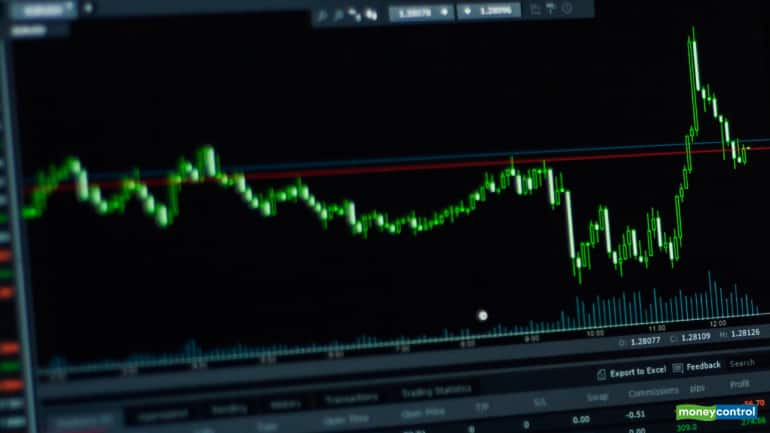Types of Vol: Historical/Realized / implied volatility options with Quantsapp
The implied volatility options measure would be anywhere between 0-100%. Higher the measure, the more violent is the stock or index and the lower the number calmer is the stock or index.Analyse the implied volatility options with Quantsapp tools .
SHUBHAM AGARWAL | 02-Oct-21
Reading Time: 3 minutes

Volatility, one word that defines our very reason to get into and get glued to the asset class of equity.
What is Volatility?
In simple words, it is the degree of change in the price of equity or index.
Because of the inconsistent sequence of types of change (big, small, up, down) we get the opportunity to trade into these equities and indices. While as an inherent characteristic it is important, Volatility as a measure also has its own significance and utility.
The volatility figure calculation is not that big a mathematical complication. Internet is filled with calculators that give us this figure given the last 20 days' data. You can input any number, I use 20 days annualized volatility because it in a way represents an expiry.
Volatility measure would be anywhere between 0-100%. The higher the measure, the more violent is the stock or index and the lower the number calmer is the stock or index. This is the 1st type of volatility popularly known as Historical Volatility or Realized Volatility.
The significance of Realized Volatility is very simple. If a stock is very low on Realized Volatility, expecting a big move on a consistent basis in short term is a bit over asking. Similarly, if we are betting against the movement via selling options, we might want to stay away from the stocks which are on our list with higher readings on Realized Volatility.
Now, let us understand the 2nd type, Implied Volatility . Options from the equity derivatives market use the volatility measure as an input for computing the premium. Premium at which an option trades is readily available information, so are the other 4 inputs used for option premium computation (stock/index price, interest rate, time to expiry, and strike price).
Considering this the Volatility figure is now back-calculated for using Premium and the 4 other inputs are called Implied Volatility. Why Implied? Because it is implied from the premium at which the index or the stock is trading. Again, a lot of options analytics software has this information readily available.
It should be the same as the Realized Volatility, right? Well, it is seldom the same but mostly similar. The reason for this is the volatility figure plugged into the option premium is the estimate of the realized volatility for the near future.
So, in case there is a known event that could raise the size of the movement in the stock or the index or a fear big move (oftentimes downwards), this figure of Implied Volatility would be much higher than the past Realized Volatility.
Apart from the event times. If in the normal course the Implied Volatility is on a rising one can safely say that a possibility of a big move is getting accounted for in the near term. It is the law of nature that anything around us takes a very small time in making but it is very fast to destroy. Just like that, rising Implied Volatility means the expectation of destruction in price (What the experience says 9/10 times).
That is the utility of Implied Volatility, a rising trend in implied volatility is the expectation of price decline (time to hedge and tighten stop losses). Similarly, a falling trend in Implied Volatility means there is calm expected meaning one out of two things, Rise in price or Consolidation. Buy trades would be a good idea around this time.
These two types of volatility are predominantly followed and used by many traders to assist their trading logic. Visit Implied Volatility Calculator now to calculate Volatility. Check Live IV Updates here.
Learn and read more about technical analysis from Quantsapp classroom which has been curated for understanding of candlesticks patterns from scratch, to enable option traders grasp the concepts practically and apply them in a data-driven trading approach.
Recent Articles

Knowing when not to adjust trades: Shubham Agarwal
27-Dec-25

How to make profit when markets go sideways: Shubham Agarwal
20-Dec-25

Beyond Panic: Take control when your derivatives trade turns red, says Shubham Agarwal!
13-Dec-25

Evolve Your Trade: The missing step in most trading systems: Shubham Agarwal
06-Dec-25

Best trending option trading strategies: Shubham Agarwal
29-Nov-25

3 best ways to hedge using Options: Shubham Agarwal!
22-Nov-25

When in doubt to write, do Iron Fly: Shubham Agarwal!
15-Nov-25

Identify potential turning points with advance-decline: Shubham Agarwal
08-Nov-25

SHUBHAM AGARWAL is a CEO & Head of Research at Quantsapp Pvt. Ltd. He has been into many major kinds of market research and has been a programmer himself in Tens of programming languages. Earlier to the current position, Shubham has served for Motilal Oswal as Head of Quantitative, Technical & Derivatives Research and as a Technical Analyst at JM Financial.
Recent Articles

Knowing when not to adjust trades: Shubham Agarwal
27-Dec-25 10:58:00

How to make profit when markets go sideways: Shubham Agarwal
20-Dec-25 12:14:00

Beyond Panic: Take control when your derivatives trade turns red, says Shubham Agarwal!
13-Dec-25 09:12:00

Evolve Your Trade: The missing step in most trading systems: Shubham Agarwal
06-Dec-25 20:43:00

Best trending option trading strategies: Shubham Agarwal
29-Nov-25 09:32:00

3 best ways to hedge using Options: Shubham Agarwal!
22-Nov-25 09:11:00

When in doubt to write, do Iron Fly: Shubham Agarwal!
15-Nov-25 10:48:00











